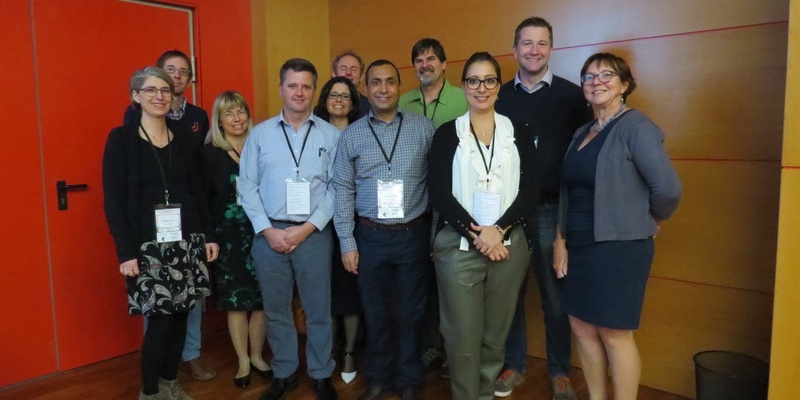IPPC Secretariat shared views on the use of Next Generation Sequence Technologies for plant pest diagnostics
Posted on Wed, 29 Nov 2017, 09:47

Speakers from Session 1
The workshop on the use of next generation sequence (NGS) technologies for plant pest diagnostics (also known as high-throughput sequencing) took place in Bari, Italy from 22 - 23 November 2017. The workshop was organized by the European Cooperation in Science and Technology (COST), EUPHRESCO and the European and Mediterranean Plant Protection Organization (EPPO) and supported by the Istituto per la Protezione Sostenible delle Piante del Consiglio Nazionale delle Ricerche of Italy. NGS technologies are very powerful alternatives for detection and identification of organisms. Over 142 participants from various regions worldwide gathered to share and discuss their experiences on pests discoveries thought the use of these technologies. Concerns were also expressed as in some cases detections and identifications may be associated solely with DNA finds and may not be from living pests or from pathogen organisms, which is where the risk is. The workshop participants had a brainstorming session to develop recommendations or best practices on the use of NGS technologies as a tool for plant pest diagnostics.
The IPPC Secretariat, represented by Ms Adriana G. Moreira, highlighted that that the proper interpretation of results from NGS technologies is one of the biggest challenges in the phytosanitary context. She noted that, proper pest diagnosis is the foundation for the implementation of many standards and it is essential that the use of NGS technologies and the interpretation of the results been done correctly. She explained that the IPPC Technical Panel on Diagnostic Protocols (TPDP) , which manages the development of the IPPC DPs (Annexes to ISPM 27 (Diagnostic protocols for regulated pests) has discussed the use of NGS technologies as a diagnostic tools for phytosanitary purposes and noted that not all organisms associated with plants are pests; some may be mutualists providing benefit to the host plant or commensal agents. Thus, these technologies may currently be used for screening consignments, but not to form the basis for final decisions (e.g. destruction or rejection of consignments).
The IPPC Standards Committee (SC) noted the TPDP recommendations on NGS and stressed that the issue is broader than diagnosis - it is also relevant for pest risk analysis and surveillance, suggesting that further work is needed on NGS technologies before they can be considered as the sole method for pest detection. At CPM-13 (2018) a side session will be held on gene sequencing and molecular technology, and NGS technologies in the phytosanitary context will be discussed.
 IPPC Secretariat, Ms Adriana G. Moreira.
IPPC Secretariat, Ms Adriana G. Moreira.
 Brainstorming session during NGS Workshop
Brainstorming session during NGS Workshop

